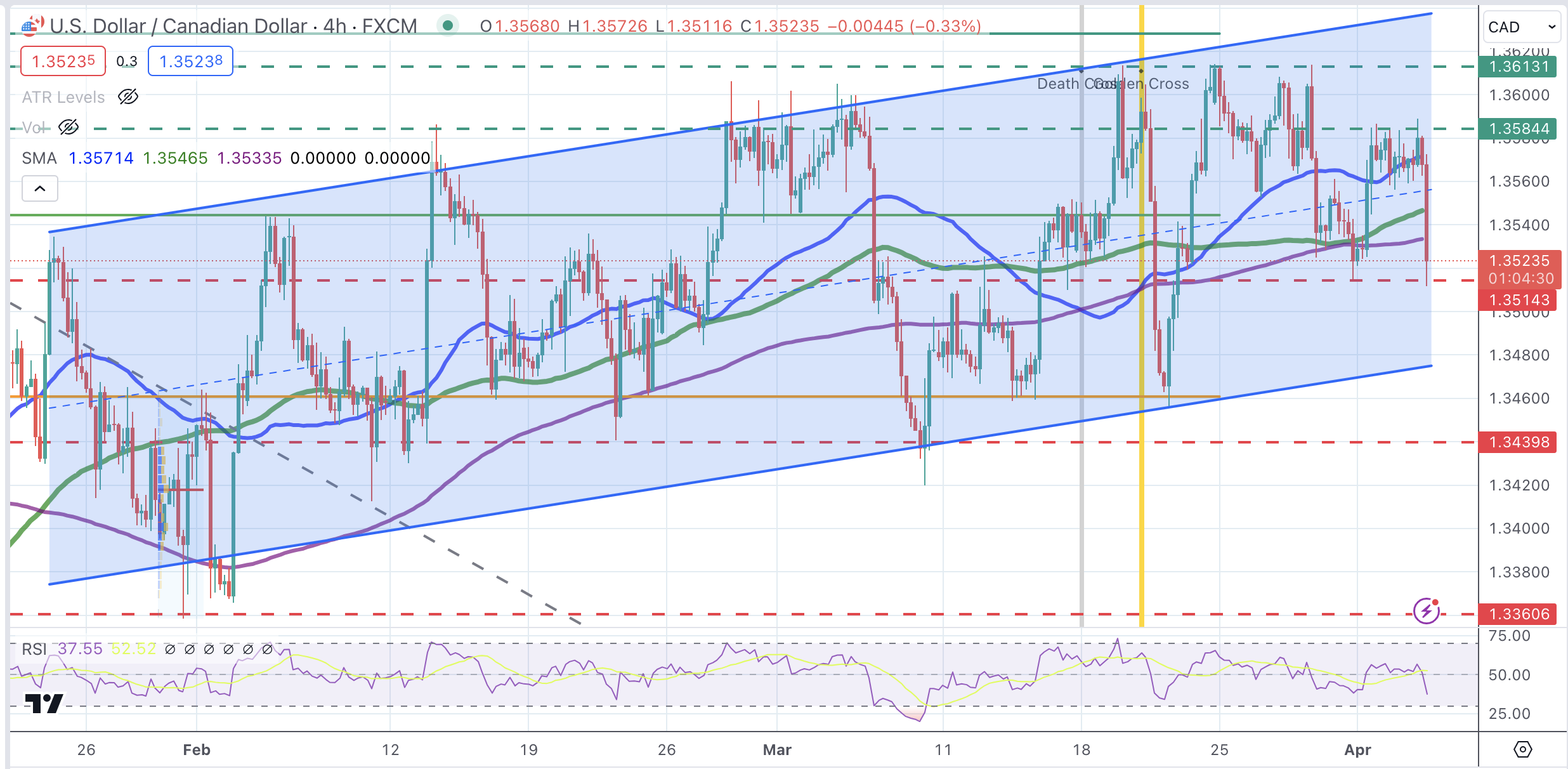- The US dollar retreats, while the Canadian dollar rebounds.
- US service sector activity slowed contrary to expectations and prices paid reached their lowest level in years.
- The strength of the US ADP and the hawkish comments from the Fed's Bostic have not provided support for the Dollar.
The Canadian Dollar (CAD) is trading higher on Wednesday, recouping losses from the previous two days. The Canadian dollar is favored by the US dollar's knee-jerk reaction to bearish US service sector activity data.
The US ISM services PMI disappointed market expectations in March, and the prices paid subindex showed a significant slowdown. This has eased investor fears of a strong economy that would lead the Federal Reserve (Fed) to reduce its monetary easing plans, which has put downward pressure on US Treasury yields and the US dollar.
The uninspiring services data has offset the larger-than-expected rise in the ADP employment report, opening the door to a bright Non-Farm Payrolls reading on Friday that could restore confidence in the US Dollar.
Elsewhere, rising geopolitical tensions and growing concerns over tightening supply have driven crude oil prices to a new yearly high. This is providing additional support to the commodity-linked CAD.
Daily summary of market movements: USD/CAD falls after disappointing service sector activity data
- Later on Wednesday, Fed Chair Jerome Powell will speak about the US economic outlook and could shed some light on the central bank's monetary policy plans.
- Canadian dollar regained lost ground on Wednesday with USD under pressure ahead of Fed Powell's speech.
- The US ISM services PMI fell to 51.4 in March from 52.6 in February, compared to market expectations for a slight increase to 52.7.
- The ISM's prices paid subindex has fallen to 53.4, its lowest level in years, from 58.6 in February and 64 in January. This signals a disinflation of the economy.
- Earlier on Wednesday, the US ADP employment report showed an increase of 184,000 new payrolls in March, up from 155,000 in February. The market had expected a decline to 148,000.
- Atlanta Fed President Raphael Bostic was hawkish on Wednesday, suggesting rate cuts might not come after the fourth quarter.
Price of the Canadian Dollar today
Below is the percentage change of the Canadian Dollar (CAD) against the main currencies listed for today. The Canadian dollar was the weakest currency against the .
| USD | EUR | GBP | CAD | AUD | JPY | NZD | CHF | |
| USD | -0.53% | -0.44% | -0.30% | -0.66% | 0.12% | -0.44% | -0.43% | |
| EUR | 0.53% | 0.08% | 0.23% | -0.13% | 0.64% | 0.07% | 0.09% | |
| GBP | 0.43% | -0.10% | 0.14% | -0.22% | 0.55% | -0.01% | 0.01% | |
| CAD | 0.30% | -0.23% | -0.13% | -0.35% | 0.42% | -0.14% | -0.15% | |
| AUD | 0.64% | 0.12% | 0.23% | 0.35% | 0.77% | 0.19% | 0.23% | |
| JPY | -0.11% | -0.65% | -0.57% | -0.41% | -0.76% | -0.56% | -0.57% | |
| NZD | 0.44% | -0.09% | 0.01% | 0.14% | -0.22% | 0.56% | 0.01% | |
| CHF | 0.43% | -0.09% | -0.01% | 0.12% | -0.22% | 0.55% | -0.01% |
The heat map shows the percentage changes of the major currencies against each other. The base currency is chosen in the left column, while the quote currency is chosen in the top row. For example, if you choose the Euro in the left column and scroll down the horizontal line to the Japanese Yen, the percentage change that appears in the box will represent EUR (base)/JPY (quote).
Technical Analysis: USD/CAD is under pressure with support levels at 1.3515 and 1.3475
The strong bearish reversal in USD/CAD following the release of the ISM Services PMI has returned control to the bears. It aims to break the support at 1.3515, which is under pressure at the moment.
The overall picture shows choppy and volatile trading, with the pair still moving within a slightly bullish channel. The mentioned level of 1.3515 protects the channel base at 1.3475 and 1.3440. To the upside, resistances are located at 1.3585 and 1.3615.
USD/CAD 4-hour chart

Source: Fx Street
I am Joshua Winder, a senior-level journalist and editor at World Stock Market. I specialize in covering news related to the stock market and economic trends. With more than 8 years of experience in this field, I have become an expert in financial reporting.







